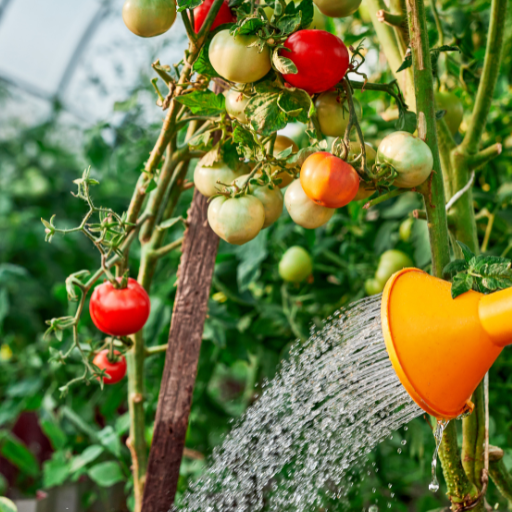For a long time, Epsom salt has been lauded for its gardening benefits, especially when it comes to tomato plants. This manual outlines how you can use Epsom salt efficiently to improve the health and yields of tomatoes. Understanding the science behind this mineral’s nutrients, the proper ways of applying them, and the right timing shall enable you to grow vigorous plants that generously bear tasty fruits. Following these three aspects of fertilizer usage makes a greater harvest possible, thereby securing great nutritional value from your farm output. Regardless of your level or expertise in farming, incorporating Epsom salts into your cultivation regime may dramatically improve tomato picking results.
What are the Benefits of Using Epsom Salt for Tomato Plants?
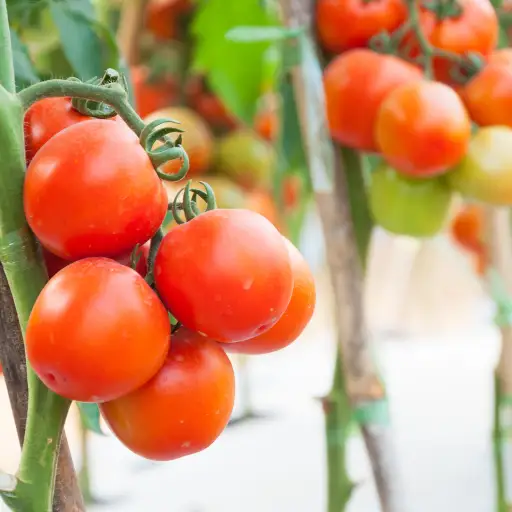
What is the role of magnesium sulfate in tomato plants?
Epsom salt and magnesium sulfate support tomato plants’ growth and health. Magnesium is an essential nutrient that helps produce chlorophyll needed for photosynthesis. This process helps turn sunlight into energy, promoting vigorous fruit growth. Moreover, it makes nitrogen and phosphorus more accessible to the plant. This organic compound also enhances drainage and reduces soil compaction, thus providing favorable conditions for root development. Therefore, using Epsom salt can make plants healthier and increase their productivity.
Is Epsom Salt Good For Tomato Plants?
Yes, Epsom salt does improve nutrient uptake in tomatoes. The catalytic activity of magnesium in magnesium sulfate enhances the absorption rate of these essential nutrients (mainly nitrogen and phosphorous) due to their importance in various enzymatic processes.
Technical Parameters
- Magnesium Concentration: A recommended soil magnesium level ranges between 50-75 ppm. These levels can be achieved by adding epsom salts, particularly on magnesium-deficient soils.
- Soil pH: The ideal pH range for your tomatoes’ growing medium should be between 6.0 and 6.8. Applying epsom salts will help you maintain or change soil pH (pH balance) to make all minerals more available to the tomato plant roots.
- Application Rate: During the growing period, apply one tablespoon per foot height every 4-6 weeks. To improve absorption, dissolve the product in water before applying it.
Including Epsom salt in your tomato fertilizer program can boost your crop’s ability to absorb critical elements.
Can Epsom Salt Stop Blossom End Rot?
Although there are no guarantees, when appropriately used, adding Epsom salts to tomato soil may reduce blossom end rot. Calcium deficiency is the leading cause of blossom end rot, and while Epsom salts increase overall plant health and nutrient absorption using magnesium, they do not supply calcium. To fight blossom end rot effectively, I use Epsom salt for better nutrition uptake and lime or gypsum to provide additional calcium. Soil condition monitoring and proper fertilization practices are vital in preventing this problem.
How to Properly Use Epsom Salt in the Garden for Tomatoes
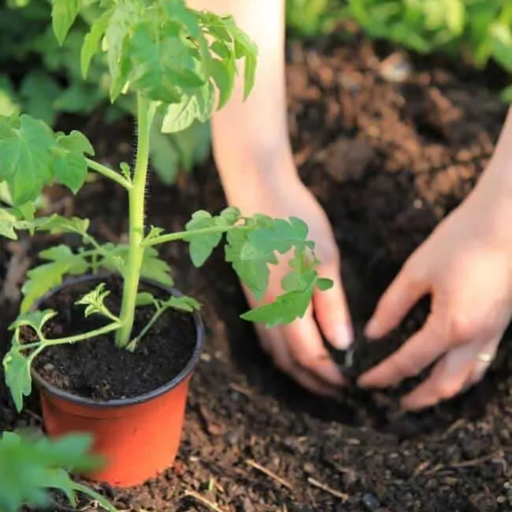
What is the correct dosage of Epsom salt for tomato plants?
The correct amount of Epsom salts to be used on tomato plants ranges from one to two tablespoons per foot high of the plant. I begin with one tablespoon mixed with water for better absorption. This could be done every four to six weeks throughout the growing season. If more magnesium is needed, I will adjust it accordingly, as they are responsive. Do not forget that any application of Epsom salt must also include calcium supplementation to enhance general plant growth.
How to add Epsom salt to the soil?
I usually don’t complicate things when adding Epsom salts into my soil to avoid overdoing it while ensuring that my tomatoes get the necessary magnesium. Firstly, I dissolve about one or two tablespoons in a gallon of water, which should equal your plant’s height. It dissolves faster this way due to solution creation (another option). Then, after mixing the solutions, transfer them to the ground near the stem bases without wetting leaves since damped foliage can help spread diseases.
Also, before planting, I sometimes put some dry Epsoms directly into the soil and mix them thoroughly. Before transplanting seedlings into each hole, I use one tablespoonful for each hole. The grading process enables the slow release of nutrients depending on changes in moisture contents held by soil particles over time; such an approach also prevents blossom-end rot, which is common among these varieties.
Is it better to spray or sprinkle Epsom salt directly on tomato plants?
In my experience, whether Epsoms are sprayed or sprinkled depends on the needs of plants and the prevailing conditions under which they grow. The quickest uptake occurs when diluted Epsom salts are sprayed onto leaves, given that yellowing is seen because there might be deficiency cases like this, thus making Mg uptake faster in such cases; however, it should have been mixed using about a tablespoon in a gallon for easy use. On the other hand, I prefer sprinkling it around the plant base to allow nutrient intake through roots, as it promotes slow and steady nutrition.
From my research on the top gardening websites, I have found that they emphasize the importance of targeting the method based on plant health. For example, if plants are healthy but require more magnesium, then application to soil should be enough. Conversely, foliar spraying may be called for when there is an apparent shortage or stress. In conclusion, I have found that a balanced approach often produces better results because it supports soil health and sustains leaf foliage well.
When Should You Apply Epsom Salt to Tomato Plants?
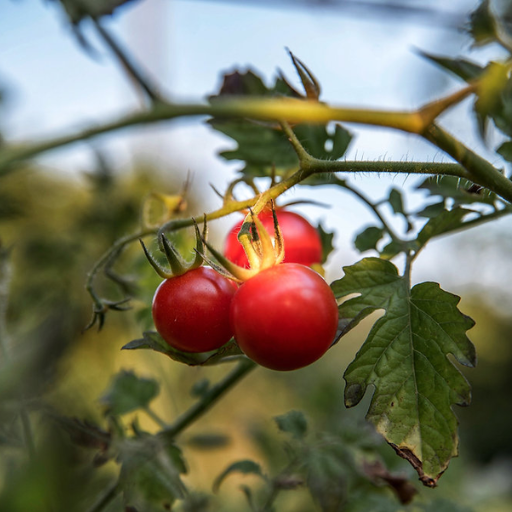
How often should one use Epsom salt?
The frequency of applying Epsom salt to tomato plants may vary depending on their growth stage and condition; this information is gathered from the leading gardening websites. In general, it is recommended to apply Epsom salt every 4-6 weeks throughout the growing season.
- Early Season: When planting, add some Epsom salt into the soil (approximately a tablespoon). This will ensure enough magnesium to help support their growth from scratch.
- Mid-Season: For flowering and fruiting, foliar sprays applied every 4-6 weeks can help maintain healthy and vigorous plants. Typically, this method involves adding one tablespoonful of Epsom salt to a gallon of water and applying it directly to the leaves.
- Indications for action: Any signs of magnesium deficiency, like interveinal yellowing on the leaves, may call for immediate applications – either by soil or spray methods. Applying Epsom salt every two or three weeks could be necessary until improvements are realized.
This way, along with prevention measures, responsive maintenance ensures that tomato plants do not lack the necessary nutrients.
Can you use Epsom salts during planting or growing?
Yes, I think adding epsom salt can be helpful at both the planting and growing stages of the tomato plants. Instead, incorporating epsom salts into the soil at the planting stage helps provide a basic amount of magnesium that supports early development. Thus far, while my plants have been growing, especially during flowering until fruiting, I have realized that spraying them with Epsom salt every four weeks did enhance their overall health and vigor. This combined approach where deficiencies are stopped as well as solid development supported during all thorough grow
Can Epsom Salt Harm Tomato Plants?
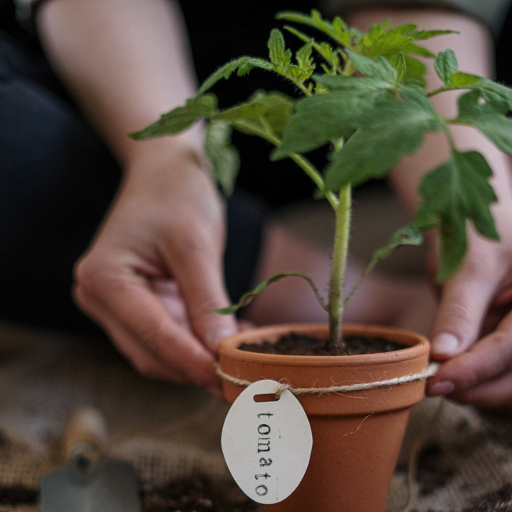
What are the symptoms of exaggeration when it comes to using Epsom salt?
In my experience, several ways indicate overusing Epsom salts in tomato plants. First and foremost, too much magnesium causes nutrient uptake imbalance, particularly regarding calcium and potassium. Consequently, these can manifest as leaf curling, yellowing at the tips of leaves, and stunted growth. It is also worth noting that I have observed that having too many nutrients might attract pests, which could heighten plant stress further.
Technically speaking, monitoring soil magnesium levels is essential. Magnesium levels should be maintained within 50-100 ppm (parts per million). When signs of excessive application start appearing, it is often recommended to hold back on any more applications for a few weeks and evaluate whether the crops will recover. This necessitates maintaining a balanced nutrient profile in the soil for the healthy growth of tomatoes.
How do you conduct a soil test to measure magnesium levels?
To determine magnesium quantities in my soil, I follow these steps: First, I use a standard soil testing kit purchased from gardening stores or online outlets. These kits are always sold along with every necessary tool, like sample containers and test strips. After harvesting several samples of soils from different regions across my garden to get an average mix, it is essential to take them out around 6-8 inches deep, where most roots grow for my tomato plants.
Once I have my samples, I blend them and let them dry off completely. The next task involves following what the kit directs me, which usually requires mixing prepared soils with defined solutions, mostly water combined with reagents used during the testing process. After waiting some minutes, I compare changes in color between a strip with chemicals on it and another one, indicating results that come complete inside its package after opening it up within the same time frame given by manufacturers’ instructions. Hence, I can establish the amount of magnesium, which is 50-100 ppm for healthy tomato plants.
For more accurate findings, I consider sending my samples to a nearby agricultural extension office or laboratory where they can perform an extensive analysis of not only magnesium but other essential nutrients as well as pH. By understanding the composition of these elements in detail, it becomes easier for me to decide how to amend the soil for the successful production of tomatoes.
What Do Experienced Gardeners Say About Using Epsom Salt?
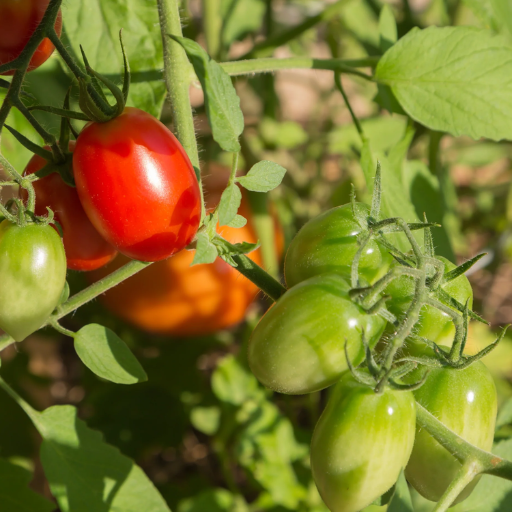
Successes in vegetable gardening according to those who have done it
Epsom salt is my secret weapon as a vegetable gardener. Adding Epsom salt to my routine has resulted in better tomatoes, healthier, and higher yielding. “My tomatoes grew larger after I used Epsom salt, and the flavor was much better than previous years,” said another experienced gardener. In addition, an individual stated, “I have always believed that using Epsom salt prevented blossom end rot, which had been a problem in my garden before.” Lastly, this other one says, “Whenever I apply it during planting or as a foliar spray, they have never grown so green and prolific!” This proves that Epsom salt is very effective at making good tomato plants strong.
Truths and Myths about Using Epsom Salt in Tomato Gardens
In my own experiences with using Epsom salts in my garden, several misconceptions need debunking. One common myth is that all plant diseases can be treated using Epsom salts. Although it can help deal with magnesium deficiency and enhance nutrient uptake, it does not solve every plant problem. Another urban legend claims more is better regarding Epsom salt, but overapplication causes soil salinization and plant damage.
However, many gardeners, including myself, believe this statement indeed supports the claim that it can promote tomato health. It can also help improve the taste of tomatoes and reduce problems such as blossom end rot, as discussed on several authoritative gardening websites. Moreover, using Epsom salt while transplanting or spraying it on leaves has proven helpful, just like other professional growers taught me. Consequently, understanding both myths and truths concerning its use enables me to maximize its benefits on my tomato farm.
Reference sources
Frequently Asked Questions (FAQs)
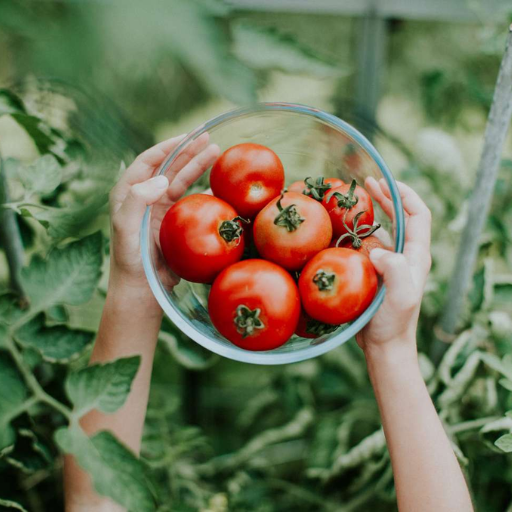
Q: What are the benefits of using Epsom salt for tomato plants?
A: Epsom salt contains magnesium and sulfur, essential nutrients that can help tomato plants grow healthier and more robust, improving their overall yield.
Q: How often should I apply Epsom salt to my tomato plants?
A: For best results, apply Epsom salt every two weeks. This helps consistently supply the plants with magnesium and sulfur.
Q: Can using Epsom salt prevent blossom end rot in tomato plants?
A: Blossom end rot is caused by a calcium deficiency, not a lack of magnesium. Although Epsom salt can benefit plant growth, it will not prevent or cure blossom end rot.
Q: How much Epsom salt should I use for my tomato plants?
A: Generally, one tablespoon of Epsom salt mixed with a gallon of water is an effective solution for tomato plants. This ratio helps the salt dissolve and be absorbed by the plants.
Q: Are there any risks of adding too much Epsom salt to my tomato plants?
A: Yes, adding too much magnesium can interfere with the plants’ ability to absorb other essential nutrients, potentially harming their growth. It’s important to use it in moderation.
Q: Can Epsom salt be used for other plants in a vegetable garden?
A: Epsom salt is suitable for various plants, including tomatoes and peppers. It can help improve nutrient absorption and overall plant health.
Q: Why do tomato plants need magnesium and sulfur?
A: Tomatoes need magnesium and sulfur to produce chlorophyll and enzymes, vital for photosynthesis and overall growth. Epsom salt provides these essential nutrients.
Q: Is it true that Epsom salt isn’t a complete fertilizer?
A: Correct, Epsom salt isn’t a complete fertilizer. While it provides necessary magnesium and sulfur, it lacks other essential nutrients that plants need, so it should be used with a balanced fertilizer.
Q: How do I know if my tomato plants are deficient in magnesium?
A: Signs of magnesium deficiency in tomato plants include yellowing leaves with green veins and poor fruit development. If you notice these symptoms, Epsom salts may help.
Q: Can Epsom salt improve the overall health of pepper plants?
A: Yes, Epsom salt can improve the health of pepper plants by supplying magnesium and sulfur, which are crucial for their growth and productivity.



